Let’s organize your holidays in Sestri Levante: here you are some tips.
Baia del Silenzio
The Bay of Silence (also called “Portobello”) can certainly be considered one of the most beautiful places of the Ligurian Riviera.
Its beach of fine sand, clear water and Ligurian Style pastel-colored houses are one of the most famous pictures of Sestri Levante.
Very important personalities of the past chose the bay for their stay, for example Richard Wagner, Guglielmo Marconi and Hans Christian Andersen (to whom is dedicated the famous literary prize that takes place in our town).
The bay is now recognized among the 10 most beautiful beaches in Italy.
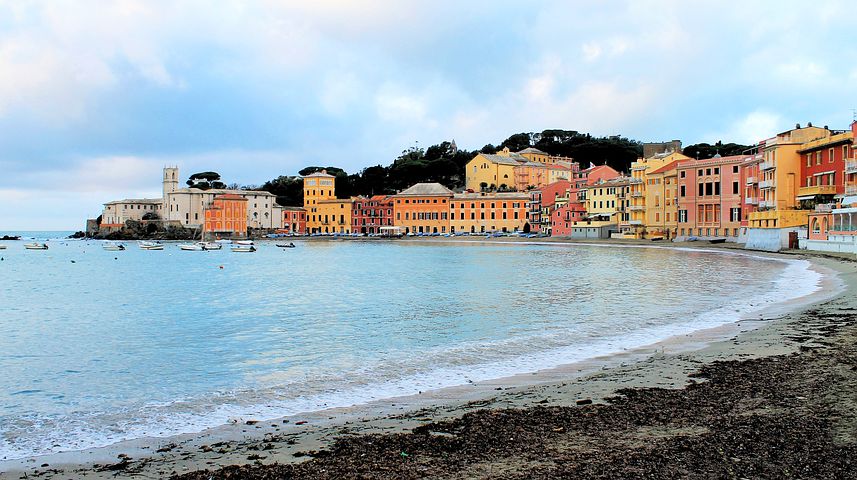
Baia delle Favole
The seafront of Sestri Levante overlooks the marvelous Baia delle Favole.
The western Gulf of the town owes its name to the Danish writer H.C. Andersen, who stayed in Sestri Levante in 1833: in his honor every year the Andersen Festival takes place, with musical events and shows for the childhood and with a prestigious international literary prize dedicated to fairy tales.
This wide and sandy beach offers visitors free equipped beaches and beach clubs and from here every evening it is possible to enjoy stunning sunsets towards the promontory of Portofino.
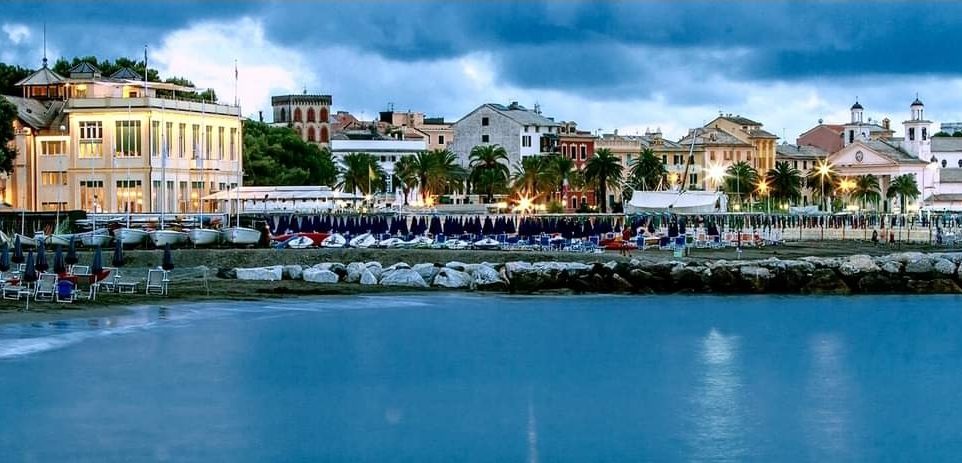
Historic Center
The old town unfolds right between the two bays, that are divided by an isthmus that joins the oldest part of the village, which stands on a small promontory, to the mainland. For this reason the town is nicknamed “the city of two seas”.
Along the historic city center there are numerous buildings of historical importance, such as Palazzo Durazzo – Pallavicini built in the seventeenth century and now the town hall, or Palazzo Fascie Rossi, now the civic library. The historic center is also enhanced by slate portals, dating back to the fourteenth century.
Church of San Nicolò
The church of San Nicolò dell’Isola was once the first parish communities of Sestri Levante and was built around 1151 near the promontory of the town – that was called “Isola”. Part of the diocese of Brugnato in 1519, its parish was suppressed in the early seventeenth century with the construction of the new basilica of Santa Maria di Nazareth.
Originally in Romanesque style, over the centuries it underwent various interventions: it became baroque during the fifteenth century, while the restorations that took place in 1912 and 1928 brought it back to the original style.
Basilica of Santa Maria di Nazareth
The Basilica of Santa Maria di Nazareth was built in the 17th century, replacing in its functions the previous Church of San Nicolò.
The church features a three-nave plant, various sculptural and pictorial elements, including paintings from the Baroque era and a wooden Pietà by Anton Maria Maragliano.
The facade was completely rebuilt in neoclassical style between 1837 and 1840.
In one of the chapels there is a wooden crucifix from the 12th century from the previous parish church of San Nicolò. Locally known as “Santo Cristo”, the popular tradition tells that the crucifix was brought to Sestri Levante from the sea, and is revered for alleged miracles and for the protection on various occasions such as drought, storms and cholera.
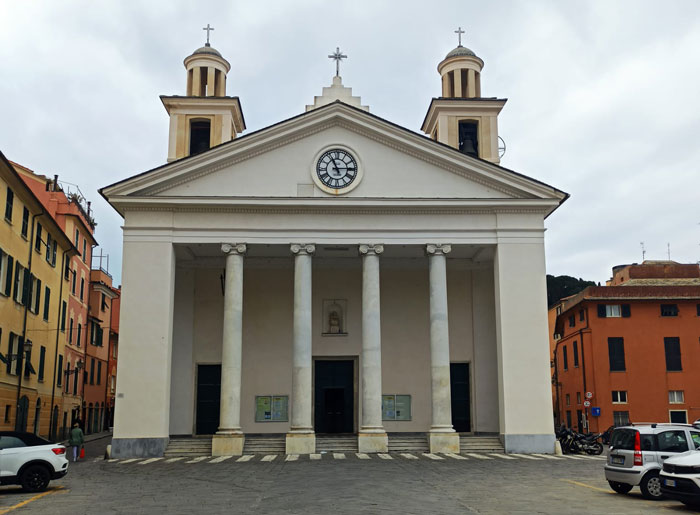
Rizzi Gallery
The Rizzi Gallery is located in the heart of the Bay of Silence in Palazzo Rizzi, that was built in 1926. It is one of the most important art collections of the East Liguria. The Gallery was born by the will of the lawyer Marcello Rizzi (1897-1960), who on his death bequeathed all his huge assets to the Italian State as long as a private foundation was created in the name of Rizzi family and located right in their building.
The rooms on the first floor have been set up trying to restore the atmosphere of a rich bourgeois house of the late nineteenth / early twentieth century.
In these rooms the different categories of objects belonging to the Rizzi family collection are exhibited, including paintings, furniture, ceramics and art books. In addition to a collection of drawings, paintings and sculptures from the fifteenth to the seventeenth century, the main components of the collection are the paintings of the Genoese and Emilian schools, partly coming from the heritage of the Balbi Villa in Sestri Levante or from the galleries of the noble families of Piacenza.
For more info visit www.galleriarizzi.com
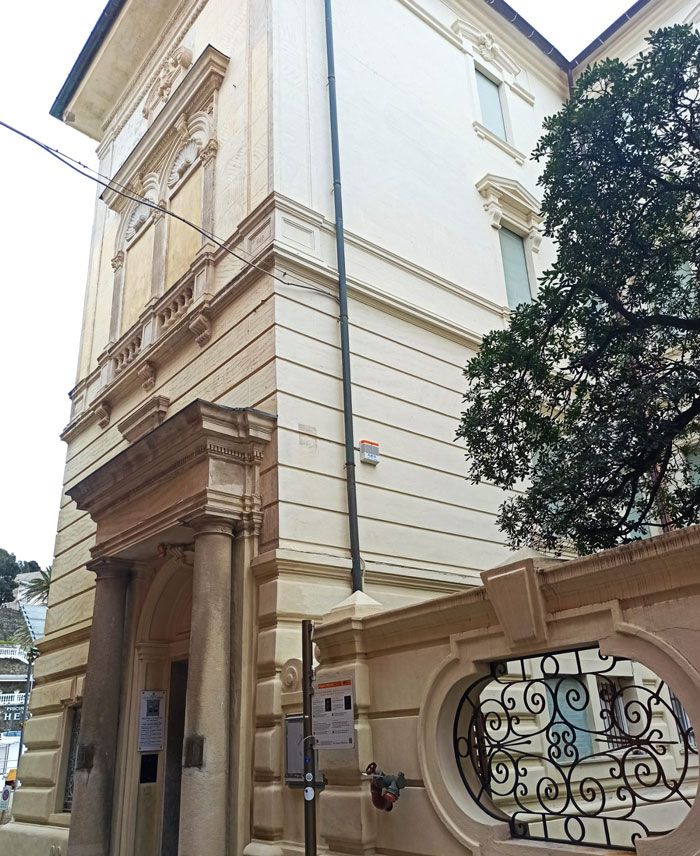
Musel
Located inside Palazzo Fascie, the Musel is part of a museum system consisting of the Archaeological Section and the City Museum in Sestri Levante and of the archaeological mining museum, the prehistoric mine and the nineteenth-century mine in Masso-Castiglione Chiavarese.
The museum offers the visitor an interesting experience across history and the territory.
For more info visit www.musel.it
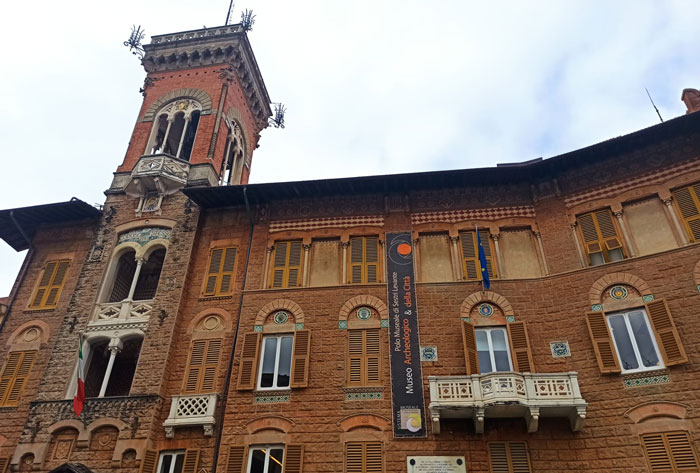
Punta Manara
Punta Manara is the promontory between Sestri Levante and Riva Trigoso. From the historic center of Sestri Levante starts a beautiful hiking itinerary that climbs for about an hour until it reaches the tip of the promontory, and then descends towards Riva Trigoso. The whole area is made up of Mediterranean scrub, an holm oak wood and a small cork area. The peak of the promontory, called Monte Castello, is surrounded by maritime pine. Located at 265 meters above sea level, here you can still see the ruins of a sixteenth-century Saracen tower and those of a structure used by the territorial and German militia during the Second World War.
Punta Baffe
Located between Sestri Levante and Moneglia, Punta Baffe is the ideal path for a wonderful walk surrounded by the Mediterranean scrub and suggestive views. A sixteenth-century Saracen tower stands out on the promontory.
On the sea, the seabed that goes from Punta Baffe to the eastern area of Riva Trigoso is a popular destination for divers.
Rocche di Sant’Anna
Starting from “Pietra Calante” in Sestri Levante and then descending towards Cavi, this path is also known as the “path of the five bridges”: this was the ancient road that in Roman times crossed the cliff of Sant’Anna thanks to the construction of five bridges, also maintained in medieval times and perhaps renovated at the end of the 18th century
Going up on the path you can reach the ruins of the church of S. Anna where you can enjoy a wonderful view along the coast, from east to west, and of the Sestri peninsula with its two bays.
This path is undoubtedly one of the most interesting in the area.
We are waiting for you to enjoy your holiday in Sestri Levante: book your stay at Suite Hotel Nettuno.